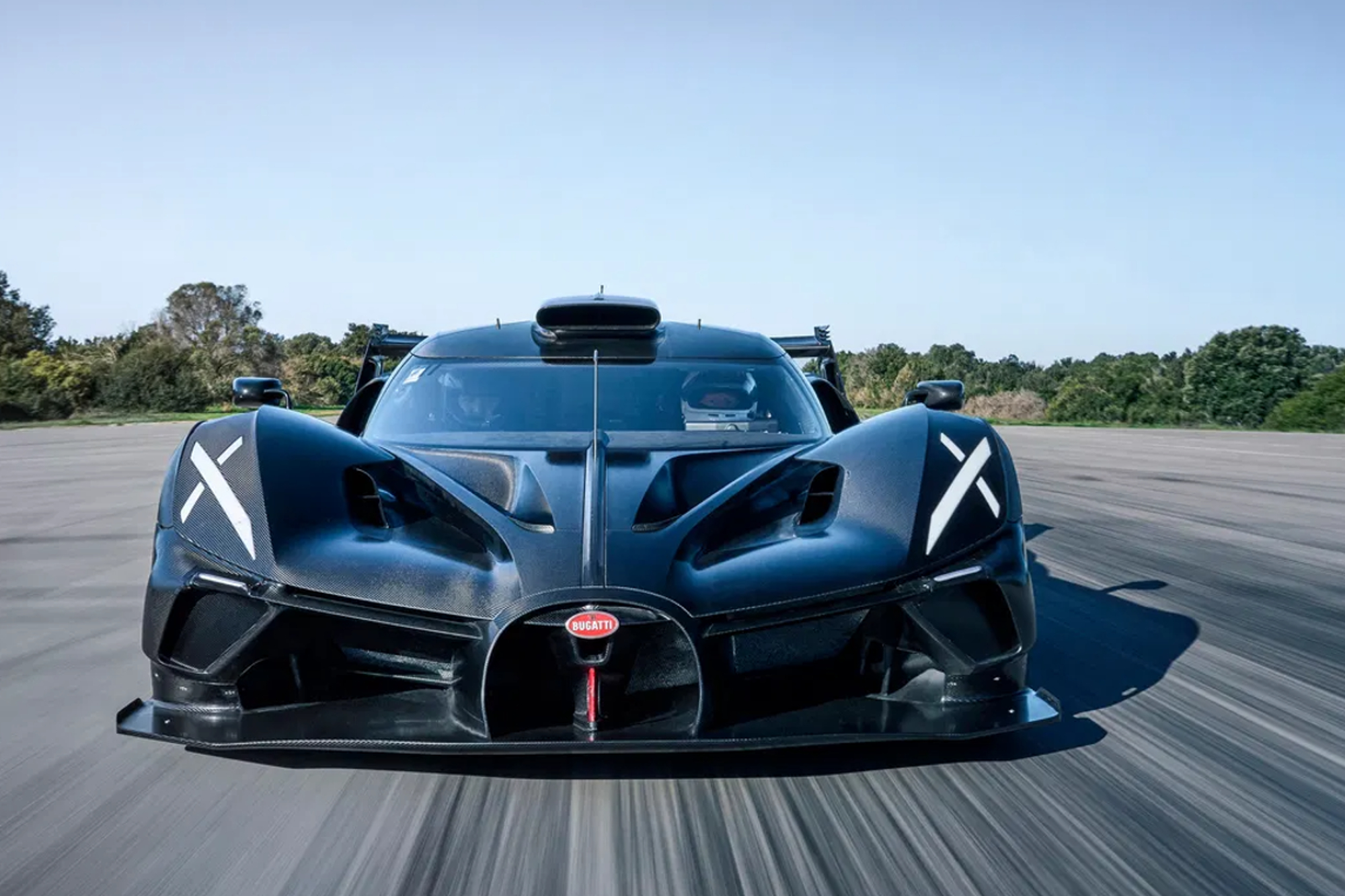
Imagine a car for drivers with no track experience that accelerates past 200 mph faster than a Formula 1 race car. Expensive and not allowed on public roads, the Bugatti Bolide is the ultimate fantasy car. The Bolide doesn’t appear to be the V16-powered hypercar in development that Bugatti teased earlier this year because it will build on the brand’s proven 1,600 metric horsepower 8.0-liter W16 turbocharged engine.
Also, despite having antilock braking system (ABS) brakes, electronic stability programming (ESP), and road-car niceties not typically found on race cars, the Bolide won’t have a future street-legal incarnation. According to Bugatti, “… the Bolide represents a departure from the norm, a shift towards a completely different realm of driving that Bugatti hasn’t yet explored in its modern-day history.”
That statement begs a look at the company’s earlier history when, 100 years ago, it designed and engineered the Bugatti Type 35 solely for track performance.
Why an approachable track-only hypercar matters

Bugatti’s modern hypercars, such as the world speed record-shattering Chiron Super Sport 300 Coupe, Veyron Super Sport, and Bugatti W16 Mistral, were conceived as supreme road cars, extremely fast, engineered and designed to the utmost tolerances, and priced for fractional one-percenters. The Bolide’s departure may instead be a return.
We can look to the words in the Bolide news release for clues about Bugatti’s intentions. Press releases worldwide are recognized for their glorification and statements of promise. But, if we toss out those filters and take Bugatti’s statements about the Bolide at face value, what the company says is similar to the historic purpose of the 1924 Bugatti Type 35.
The Bugatti Bolide: for the track and only the track

Two themes emerge from the Bolide announcement: accessibility and dominance.
“Yet, the Bolide isn’t just about blistering lap times, it is also about accessibility.” – from the Bolide news release
“Everything about the car is completely different from what I have driven before. All cars are difficult to drive at their limit, but even at the limits of its capabilities, the Bugatti Bolide remains remarkably easy to drive… Even I found myself in a state of disbelief after my initial stint driving the Bolide.” – Andy Wallace, Bugatti Official Driver

“Not just focused on speed, each and every aspect is finely tuned for circuit dominance.” – Bolide news release
“In essence, the Bolide is a master in the art of the track.” – Bolide news release
In another 100 years, Bugatti may do it again

Hypercars driven on public roads are inspired by race cars. With the Bolide, Bugatti appears to have flipped that model around: it’s a race car inspired by road
Why can’t drivers be comfortable on the track? Stripping cars of non-essentials and creature comforts made sense when power was scarce. When there’s so much power available that aerodynamics serve to control it, adding back human comfort factors makes sense. Why should drivers suffer unnecessarily on the track?
Watch a few F1 Grand Prix races to learn that most crashes occur around corners. Bugatti stresses that in developing the Bolide, cornering, braking, and traction were more important than top speed.
If the 1924 Bugatti Type 35 track-only car was the model for every Bugatti in the past 100 years, perhaps the 2024 Bugatti Bolide is the model for the next century. One way to test this theory is to check back in 2124 to see if Bugatti designs and engineers another track-only car.




